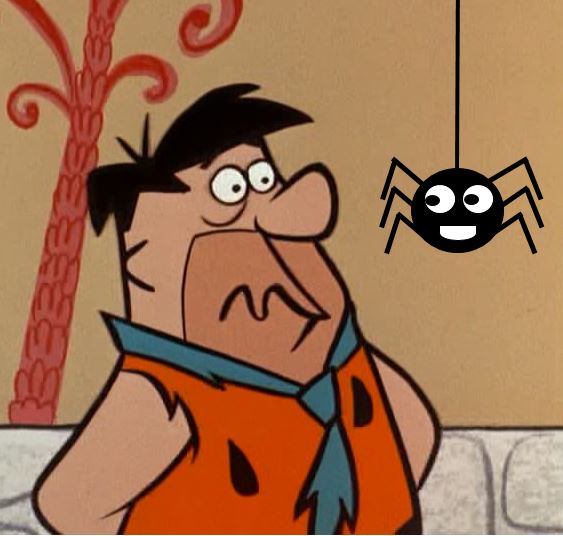Why are so many of us scared of spiders? Are we born with arachnophobia, or do we develop it during our childhood as we observe how adults and other children around us react? Is it a nature or nurture phenomenon? Experts appear to disagree.
Two American researchers believe that our fear of spiders is now part of our DNA as a product of human evolution. Since our ancient ancestors started walking on two legs in Africa about two million years ago, we gradually developed the survival instinct to avoid spiders – a trait that became ingrained in our genetic makeup.
They say that in prehistoric times there were many more poisonous spiders in Africa compared to today.

Has our fear of spiders evolved since prehistoric times? And if so, are we now genetically programmed to be arachnophobes?
Some experts disagree with them, and insist that we learn to fear spiders as a result of social conditioning.
Joshua New, assistant professor at Columbia University explains that prehistoric humans in Africa who were good at spotting spiders probably lived longer than their less wary peers.
Venomous spider threat was greater in the past
In an interview with the Sunday Times, Prof. New explained:
“A number of spider species with potent, vertebrate-specific venoms populated Africa long before hominoids, and have co-existed there for tens of millions of years. Humans were at perennial, unpredictable and significant risk of encountering highly venomous spiders in their ancestral environments.”
“Even when not fatal, a black widow spider bite in the ancestral world could leave one incapacitated for days or even weeks, terribly exposed to dangers.”
Prof. New and Prof. Tamsin German, who works at the University of California at Santa Barbara, recently carried out a study to determine how good modern humans are at identifying spiders when presented with several different images of nasty things at the same time.
Their findings have been published in the academic journal Evolution & Human Behavior.
We spot spiders faster than other nasty things
In the study, involving 252 volunteers, the vast majority recognized spiders much faster than images of other things we don’t like and often fear, such as flies and hypodermic needles.
Prof. New explained in his website:
“This ability (to pick out spiders more quickly) was highly specific to stimuli which conformed to a spider ‘template’: participants were frequently inattentionally blind to scrambled versions of the spider stimuli, and to a modern threat (hypodermic needle), and even a different animal (housefly).”
“This demonstrates that some evolutionary-relevant threats are highly-specified and can evoke what is perhaps best termed ‘reflexive awareness’: an immediate and elaborated perception sufficient to guide an adaptive behavioral response.”
Prof. May believes we become that way
Professor May, who teaches psychology at the University of Plymouth, UK, believes arachnophobia is not inherent, but something we gradually acquire over the years. The fear stems from early childhood when we see adults, older siblings and other children around us reacting to spiders.
Spiders have certain features – unpredictable movements, angular legs and dark colours – which accelerate the formation of the specific fear.

According to Professor May:
“Spiders just tick all these boxes, and like any phobia, when it builds up in someone’s mind they can become scared even seeing a picture.”
“We like bright-coloured butterflies and ladybirds, but spiders are dark coloured with long angular legs – and the shape and colour both have strong negative associations.”
“We are also very sensitive to seeing things moving out of the corner of our eye and immediately notice it, and insects move quickly and unpredictably.”
So, while Professors New and German believe our fear of spiders came from millions of years of evolution and is now part of our genetic makeup, Prof. May suggests it is the result of social conditioning and that we are not born that way.
How deadly are spiders?
Venomous spiders are a much smaller threat than many of us believe. Dying from a spider bite is extremely rare.
An average of 6.6 people in the United States die from venomous spider bites annually, while eight times as many die from wasp and bee stings.
A spider uses its venom to kill its prey after it has been captured in its web (sometimes by other means). In fact, a spider is only really poisonous if you get ill after eating it, so the term ‘poisonous spiders’ is a bit misleading.
A European study found that from 3.5% to 6.1% of people in the general population suffer from arachnophobia.
Citation: “Spiders at the cocktail party: an ancestral threat that surmounts inattentional blindness,” Joshua J. New and Tamsin C. German. Evolution & Human Behavior (Official journal of the Human Behavior and Evolution Society). DOI: 10.1016/j.evolhumbehav.2014.08.004.

